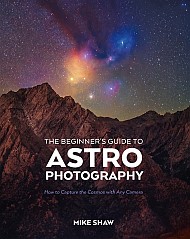Astronomy
Spot Uranus at Opposition
Uranus is its closest to Earth all year on the night of November 21st, and you can find it easily in the evening sky using Sky & Telescope’s exclusive star chart.
The post Spot Uranus at Opposition appeared first on Sky & Telescope.
Follow CM25 online
The European Space Agency's Ministerial Council – more formally Council at Ministerial level – takes place in Bremen, Germany on 26 and 27 November 2025.
Astronomers may have glimpsed evidence of the biggest stars ever seen
Astronomers may have glimpsed evidence of the biggest stars ever seen
Undersea ‘storms’ are melting the ‘doomsday’ glacier’s ice shelf
Undersea ‘storms’ are melting the ‘doomsday’ glacier’s ice shelf
How Mega-Constellations Are Learning to Manage Themselves
Satellite megaconstellations are quickly becoming the backbone of a number of industries. Cellular communication, GPS, weather monitoring and more are now, at least in part, reliant on the networks of thousands of satellites cruising by in low Earth orbit. But, as these constellations grow into the tens of thousands of individual members, the strain they are putting on the communications and controls systems of their ground stations is becoming untenable. A new paper from Yuhe Mao of the Nanjing University of Aeronautics and Astronautics and their co-authors hopes to alleviate some of that pressure by offloading much of the control scheme and network decision-making logic to satellites themselves.
Ancient tracks may record stampede of turtles disturbed by earthquake
Ancient tracks may record stampede of turtles disturbed by earthquake
Quantum computers need classical computing to be truly useful
Quantum computers need classical computing to be truly useful
This Week's Sky at a Glance, November 21 – 30
Saturn's rings are now the closest to edge on that they'll get. The famous interstellar comet has become higher and easier for amateur telescopes before dawn.
The post This Week's Sky at a Glance, November 21 – 30 appeared first on Sky & Telescope.


